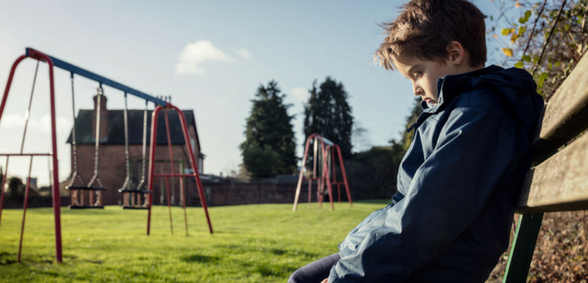
Loneliness is a complicated state of mind and the impact it can have can be debilitating. Karen Dolva, CEO and co-founder of No Isolation, considers the implications that loneliness can have on children and what you can do in school to alleviate it
 At a time rife with buzz-phrases such as ‘the epidemic of loneliness’ it can be hard to quantify what true loneliness actually is. Loneliness and chronic isolation are often used interchangeably but it’s important to remember that they’re not the same thing. The state of loneliness can be a surface feeling of being lonely; however, when it becomes chronic and debilitating isolation, the implications become more serious.
At a time rife with buzz-phrases such as ‘the epidemic of loneliness’ it can be hard to quantify what true loneliness actually is. Loneliness and chronic isolation are often used interchangeably but it’s important to remember that they’re not the same thing. The state of loneliness can be a surface feeling of being lonely; however, when it becomes chronic and debilitating isolation, the implications become more serious.
Currently, there are nine million chronically isolated people in the UK. This number spans the elderly, single mothers and millennials to name but a few at-risk groups. For me, however, the most heart wrenching fact of all is that three to 10% of children are also suffering from chronic isolation.
Identifying isolation and the impacts on children
In school, as in life, chronic isolation can be hard to identify in youngsters who may not be able to accurately recognise or describe the feeling. Unlike other ‘epidemics’, chronic isolation is not something that can be ‘cured’ as it is something that we all experience differently. Loneliness for a child can be sitting alone at lunchtime, or it could be feeling uncomfortable in a situation and talking too much to alleviate this feeling. The signs can be hard to pinpoint, but the impact is evident.
Dr Gerine Lodder – post-doctoral researcher of loneliness amongst young people from the University of Groningen – puts it as follows. “Lonely youngsters perform worse at school, become depressed and can…have more difficulty reaching out to others in comparison to their peers.” In brief, loneliness can influence the social and educational development of a child; in the worst cases, this feeling can continue into later life. Lonely children can grow into lonely adults and the mental health implications can be far-reaching.
By the very nature of loneliness, it is impossible to provide a ‘one-size fits all’ solution and a definite list of symptoms to look out for; however, one of the warning signs can be big changes in a child’s life. Whether this be a change in their environment, routine or peer group – a destabilising event can lead a child to be unsure of their situation. Changes like this may seem ‘normal’ to an adult and it is during periods such as this that chronic loneliness amongst children can be overlooked.
Combatting isolation in schools
Dr Lodder correctly points out that pushing lonely people into social situations may not always be the best course of action – those with limited social skills or a negative self-image may not benefit from large group interactions.
One of the ways in which we can combat this problem is by simply recognising how widespread it is. Adults often stigmatise loneliness and don’t speak about it with each other, their families or their children. This, in turn, creates and perpetuates the taboo surrounding the issue and means that children then also do not discuss it and may not recognise it for what it is.
Teaching children about isolation, and encouraging natural conversation about the topic, can go a long way to making this issue more manageable. The more we talk about it, the more normal it will be, and the more people will be able to recognise loneliness in others and provide help for those who need it.
The fight against the ‘loneliness epidemic’ is just beginning, and schools can be instrumental in changing the way in which we talk about loneliness. Schools are brilliant centres of learning, and great strides have already been made in drawing attention to this issue generally, but it’s time to open up the conversation at home, as well as at school.
Don’t forget to follow us on Twitter and keep up-to-date with the latest news and features
